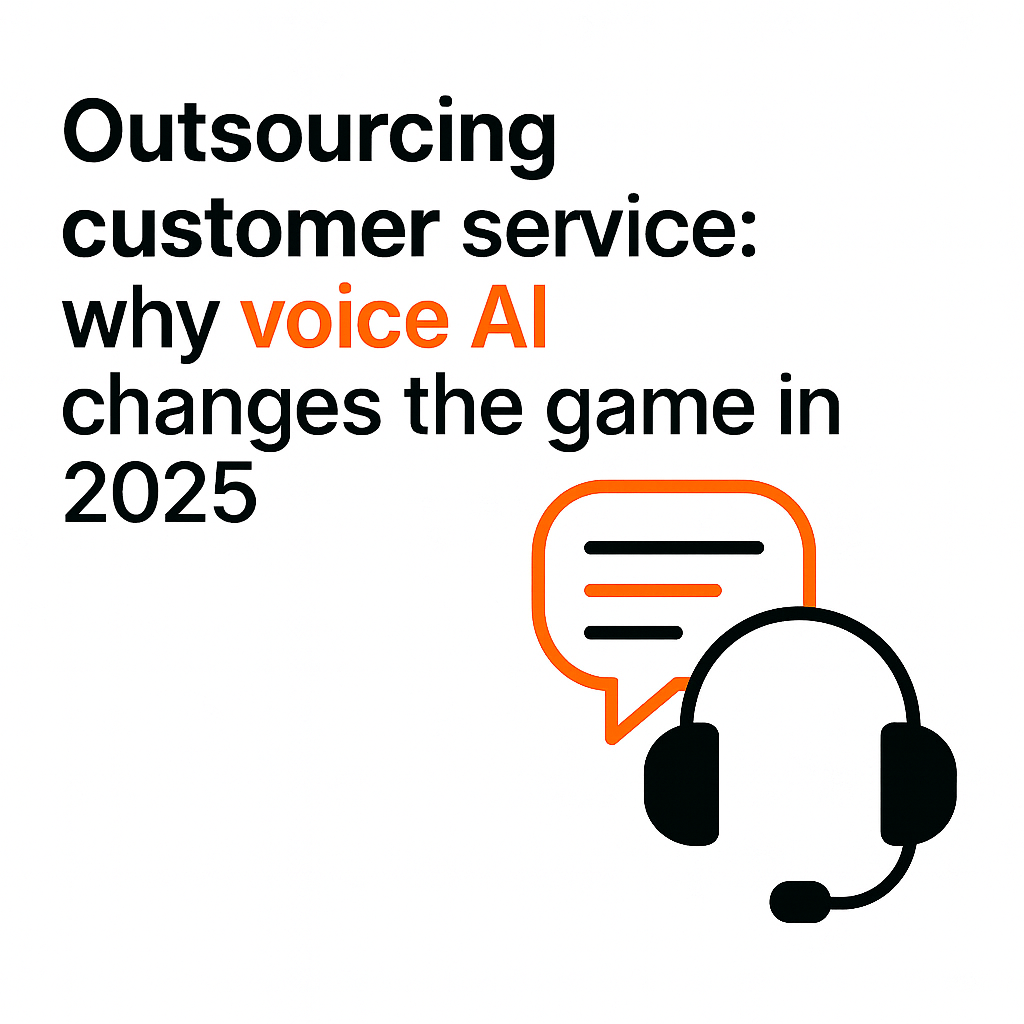1. The context: customer service under pressure
In 2025, customer expectations have reached an unprecedented level:
- instant availability,
- greater personalization,
- fast problem resolution.
For businesses, this raises a central question: how can you deliver high-quality customer service without exploding costs?
Historically, the answer was outsourcing customer service, a widespread practice. But a new alternative is now emerging: automation through voice AI.
2. Customer service outsourcing: a historical but limited solution
Advantages
- Access to 24/7 support teams
- Less internal burden (recruitment, training, turnover)
- Ability to absorb peak demand
Drawbacks
- High costs: billed per agent, per minute, or per call volume
- Loss of control over quality and consistency
- Standardized customer experience, with little differentiation
- Slow scalability: hard to ramp capacity quickly
In short, outsourcing solves volume problems but remains expensive and often disconnected from the brand experience.
3. Voice AI: the game-changing alternative
With solutions like Rounded, companies can now automate a large share of their phone interactions.
Strengths
- No missed calls: the agent answers 100% of incoming calls, even outside office hours
- Automation of repetitive tasks: appointment scheduling, order tracking, invoice reminders, FAQs
- Ability to act: update CRM, send emails or SMS, create support tickets, trigger payments
- Lower costs: pay-per-minute billing, no fixed personnel overhead
Current limits
- Not suitable for highly emotional or complex conversations
- Still improving in noisy or multilingual environments
- Persistent customer skepticism toward synthetic voices, although quality is rapidly improving
In essence, voice AI excels at repetitive, high-volume calls - freeing human agents for complex, high-value interactions.
4. Comparison: outsourcing vs automation
Outsourcing and voice AI do not play the same role - and that’s where the difference lies.
- Costs: outsourcing often comes with fixed and variable charges (per agent, per minute, or per volume of calls). Voice AI, on the other hand, is billed per usage, which makes it far more flexible and usually more affordable.
- Scalability: an outsourced team takes time to grow, depending on the provider’s resources. Voice AI can scale instantly, handling an unlimited number of calls without delay.
- Quality of service: outsourced teams vary in consistency. Voice AI guarantees predictable, configurable quality - and it integrates directly with CRM and APIs.
- Personalization: outsourcing remains fairly standardized, while AI can adapt tone, scripts, and data-driven answers for each customer.
- Availability: outsourcing depends on contractual agreements. Voice AI is available 24/7 by default.
In short, outsourcing helps when you need human empathy and adaptability, while voice AI excels at efficiency, scalability, and cost control. The key is to know where each one brings the most value.
5. Toward a hybrid model: humans and AI
The future of customer service isn’t about choosing between outsourcing and automation. The most effective model is hybrid:
- Voice AI handles simple, urgent, and repetitive calls
- Human agents - internal or outsourced - focus on complex, sensitive, or strategic cases
This hybrid approach combines the best of both worlds:
- controlled costs,
- stronger service consistency,
- an enhanced customer experience.
Conclusion
For years, outsourcing was the default answer to high call volumes.
But in 2025, voice AI changes the equation by offering a more flexible, scalable, and cost-efficient alternative.
To stay competitive, companies must now think hybrid: automate the bulk with AI, and let humans handle high-value interactions.
What if the first clients of voice agents were outsourced call centers?
With Rounded, it’s already possible to deploy a voice agent that answers every day, at any hour, with no wait time. These agents don’t just talk - they act!

